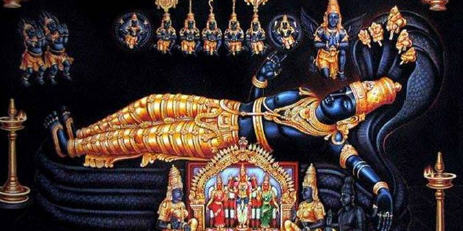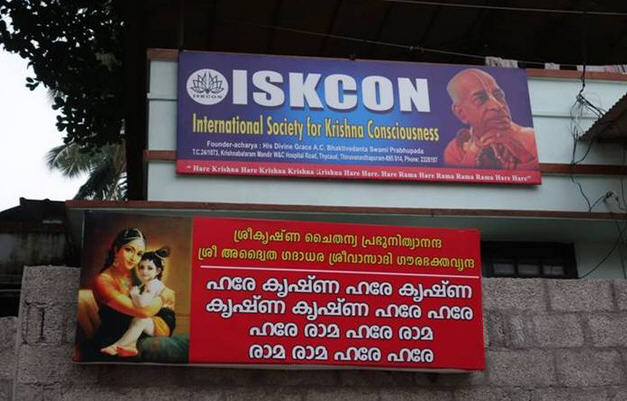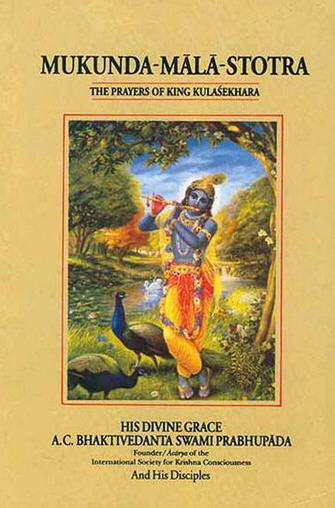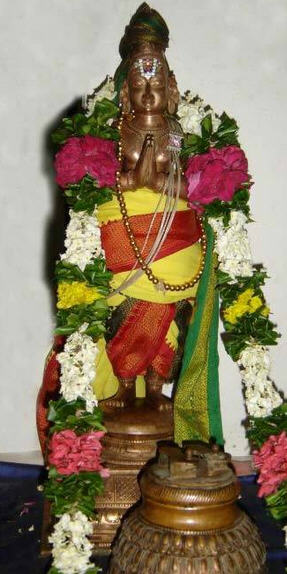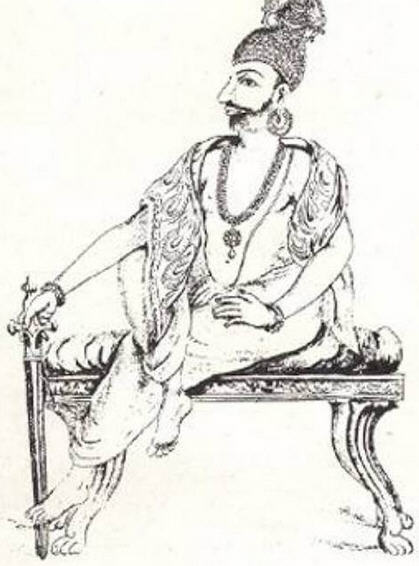LORD SRI ADI KESAVA PERUMAL at Thiruvattar Sri Adikeshava Perumaal temple is an ancient and a very important temple situated in Thiruvattar. Lord Sri Adi Keshava Perumal is huge 22 feet in a Bhujanga Sayanam (sleeping in the opposite direction – Head in the South, Feet in the North). For a full darshan, the Deity must be viewed through three doors. One of the unique occurrence at this temple is that between the 3rd and 9th day of Puratasi and Panguni, during dusk, sun’s rays directly falls on the Lord inside the sanctum, almost as a mark of respect from the Sun God to Sri Adi Kesava Perumal. Other interesting facts are: Parasurama is said to have undertaken penance at this place and performed daily poojas for Sri Adi Keshava Perumal; Sage Vashista is said to have stayed here for several years. Another remarkable feature is the Otraikkal Mandapam (single stone hall) outside the main sanctum of the temple altar is measuring 18ft width and 3ft height that has been built on a single stone in the 12th Century AD. This is three feet thick and 17½ by 15 feet long. It certainly shows the skill of which the stone carvers had during the day when this temple was built.
Sri Adi Keshava Perumal at Thiruvattar is located near the Kerala – Tamil Nadu border about 6 km north-east of Marthandam town, 30 km north-west of Nagercoil (in Kanyakumari district, Tamil Nadu), 54 km from Trivandrum and 46 km from Kanyakumari. Temple is one of the 13 Malai Naatu divya desams. Though this, Divya Desam is located in Tamil Nadu, there are no big temple towers that are typical of Divya Desams in Tamil Nadu. The temple has been built in typical Kerala style on a three acre land. All poojas are in Kerala style – Thaanthriga Vithi and the priest is from Kerala as well.
The temple is surrounded on three sides by rivers Kothai, Parali and Tamraparni. River Paraliyar takes a turn in this place and diverges to flow forming an island and it is called vattaru and when the temple of Adikeshav Perumaal was created it came to be known as Thriuvattaru. One has to climb 18 steps to reach Sri Adi Kesava sannidhi (altar). This Temple is older than Sri Ananta Padmanabha Swamy temple at Trivandrum (50 km from here). The temple is situated in a compound of 1½ acres. It is surrounded by a massive 30-foot tall wall. The inner sanctum of the temple was constructed over 4,000 years ago. In the temple there is a spot, the very place that Lord Caitanya sat and read the Brahma-samhita. On western side of the temple is the ghat where Tamraparni river flows. Sri Caitanya Mahaprabhu took the dip at this river before taking the darshan of Sri Adikeshava Perumal. The structure of the temple is similar to that of Sri Ananta Padmanabha Swamy temple at Trivandrum. The style and the architecture of this temple is taken as the sample to construct the Sri Ananta Padmanabha Swamy Temple. There are close to 50 inscriptions inside the temple in the outer prakarams in both Tamil and Sanskrit. In addition to the inscriptions, one also finds a number of stunning sculptures on the pillars. No two images are the same. Walking along the outer hallway, we reach the place of the copper flagstaff, the dwajasthamba. This was installed by Maharaja Mulam Tirumal of Travancore in 1895. Next we come to the Nalambalam, the circumambulatory passage around the sanctum (Sri Balippuram), which is a hall with 224 ornately carved granite pillars. The pillars nearby in the Balipeeta Mantap have life-size images that include Visnu, Laxmana, Indrajit, Venugopal, Nataraja, Parvati and others. There is also a shrine to Tiruvambadi Krishna. Additional shrines to Adi Kesava, Venkatachalapati and Taayar are also found.
This temple has been glorified by a decad off 11 verses composed by Nammalwar in the first millennium CE. Vaikuntha Ekadasi is celebrated with pomp and glory. Paal Payasam (Milk Kheer), Aval and Appam are delicious prasadams at this temple. It is an important centre of worship and is also referred to as Adi Anantam and Dakshina Vaikuntham.
The Deity of Sri Adi Keshava Perumal is 22 feet huge, made out of 16008 Saligrams, facing west, Bhujanga Sayanam (sleeping in the opposite direction – Head in the South, feet in the North). The Lord is lying on his snake couch and has to be viewed through three doors. Lord Siva is near the Lord Adikeshava Perumal inside the sannidhi (altar). Sri Adi Keshava Perumal faces west as it is said that He is looking toward Sri Ananta Padmanabha Swamy temple in Trivandrum. This Deity of Adikeshava is considered the elder brother of Sri Ananta Padmanabha Swamy.
Lord Sri Caitanya Mahaprabhu visited this temple in 1510 AD during His South India tour. This is the temple where Lord discovered the 5th chapter of Sri Brahmasamhita. Brahma-samhita is said to contain 100 chapters. This scripture is so old and so sacred it was practically lost to the general population. But Sri Caitanya Mahaprabhu understood the supreme importance of this scripture and He found it in the Sri Adi Keshava temple at Thiruvattar. As soon as Lord began to hear and read the content of Sri Brahma-samhita, He was overwhelmed with ecstatic love. Lord transcribed Brahma-samhita to take it with Him and to share it with His devotees and ultimately with the whole world.
The Pastime of Adikeshav Deities Manifestation
Lord Brahma performed a yajna without Saraswati Devi and as a result of Saraswati’s anger, two asuras (a brother and a sister) by name Kesan and Kesi emerged out of the Yajna agni (sacrificial fire). They were troubling the three worlds. The demigods approached Lord Vishnu and requested Him to find a solution. Lord Vishnu in the form of Adi Kesava fought with Kesan. Lord threw Kesan who fell on top of Mahendragiri and Lord blew His conch. Instantaneously, Adi Sesha wound himself around Kesan thus disabling the asura to move and Lord immediately laid on Adi Sesha thus putting His weight on the asura. When the asura tried to get out of Adi Sesha’s coils, Lord made 12 Siva-lingams to stand as guard all around the asura and Him. These famous Siva Temples are Thirumala, Thikkurussi, Thrupparappu, Thirunandhikkara, Ponmana, Pannippakam, Kalkkulam, Melankodu, Thiruvidaikkodu, Thiruvithamkode, Thiruppanrikkode and Thirunattalam. These are situated at quite a distance from Adi Keshava temple. Even today, the worship to Lord Siva on the occasion of Siva-ratri, the famous Sivalaya ottam – is said to be completed only when Siva devotee after visiting the twelve Siva shrines ends their trip in the Sri Adi Keshava Perumal Temple.
Meanwhile, Kesi who saw her brother defeated wanted to take revenge. Hence she along with her friend, Kothai took the form of rivers and encircled the temple with the intention of submerging the temple. At that time, it is believed that Bhumi devi raised the temple at a height. Hence, the temple is situated at a height of 55 feet from the ground level. The image of the Gopuram clearly indicates this. The rivers joined with Arabian Sea at a place known as Moovaatru mukham. These rivers were then cursed by Lord to remain as sinful rivers and they later repented for their action. The merciful Lord forgave them and purified them by taking a dip in them. Even today, during Painguni utsavam, Lord’s utsava-vigraha comes on a golden Garuda and has a dip in the river thus enacting the incident.
Thiru Allah Puja:
In 1740 AD, the men of the Nawab of Arcot looted this temple and the golden utsava-murti. Out of contempt, Nawab kept the Deity along with rubbish items in a godown. However every day, the Deity would automatically come on top pushing aside all the weights that were put on it. The perplexed Nawab had it chained down, boring two holes in the pedestal. At that time, the Nawab’s wife was afflicted with a serious illness. She was unable to withstand the excruciating pain. The physicians could do nothing about it. Then the Deity appeared in the dream of the temple priest (Azhathi) and ordered him to go to Nawab’s palace and inform the Nawab that if the Deity was returned, his wife would be cured of illness. Explaining the greatness of the Lord, the Azhathi convinced the Nawab that the illness would be cured once the Deity was restored to its original place in the temple. The Nawab complied and acted accordingly. Nawab’s wife was cured. He was surprised that the illness of his wife had disappeared. The Nawab repented for his blasphemous deeds and as a token of gratitude, he offered a pillow, crown, a golden plate and cup to the Lord. A special pooja or worship was performed wherein a cap that is used to crown the Deity is fashioned like the Muslim head dress. This was instituted by the Nawab and is still performed during the two annual Utsavams and the paraphernalia offered by Nawab is used at the time of Sheeveli puja every day. He also provided the fund for conducting annual puja, which is called Thiru Allah Pooja. The Thiru Allah mandapam within the temple is linked with this episode and is the place where 21-day Thiru Allah puja takes place even today.
